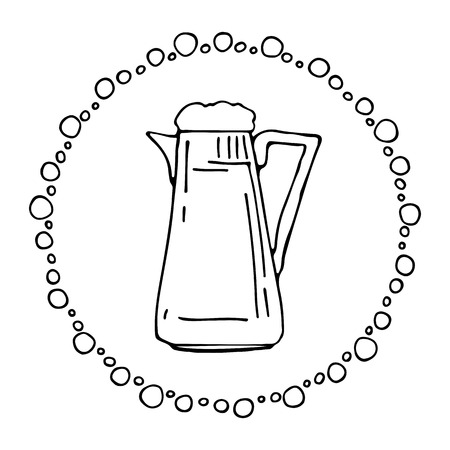1. What Is Coffee Roasting?
If youve ever wondered how coffee goes from a green, raw bean to the aromatic, flavorful drink in your cup, it all starts with roasting. Coffee roasting is the process of applying heat to green coffee beans to transform their chemical and physical properties. This transformation unlocks the rich flavors, aromas, and colors we associate with brewed coffee.
Why Roasting Matters
Green coffee beans are dense, grassy-smelling seeds that dont resemble the coffee we know and love. Through roasting, these beans undergo complex changes that develop their flavor profile. The roast level—light, medium, or dark—can highlight different taste notes like fruitiness, nuttiness, chocolatey richness, or smokiness.
The Basic Science Behind Roasting
Though it may sound technical, the chemistry behind roasting can be explained in simple terms. When heat is applied to green beans, several key reactions occur:
- Maillard Reaction: This is a reaction between amino acids and sugars in the bean that creates complex flavors and brown color—similar to what happens when you toast bread or sear meat.
- Caramelization: Natural sugars in the beans begin to break down under heat, adding sweetness and depth to the flavor.
- First Crack & Second Crack: These are audible cues during roasting. “First crack” sounds like popcorn popping and marks the beginning of light roasts; “second crack” indicates darker roasts.
What Happens During Roasting?
| Stage | Description |
|---|---|
| Drying Phase | The beans lose moisture and begin to turn yellow. This sets up the chemical reactions that follow. |
| Browning Phase | The Maillard reaction starts here, developing aroma compounds. Beans turn light brown. |
| First Crack | A popping sound occurs as pressure builds up inside the bean. Light roast levels are achieved here. |
| Development Time | This determines how long after first crack the beans continue roasting. It shapes flavor balance. |
| Second Crack (optional) | A second set of pops can occur; this is where darker roasts are developed, bringing out bold flavors. |
The Role of Heat and Time
The way heat is applied—and for how long—can dramatically affect a coffees final taste. A fast roast might bring out bright acidity and fruity notes, while a slower roast might enhance body and sweetness. Finding the right balance is both an art and a science.
In Short
Roasting is what turns ordinary green coffee beans into extraordinary cups of joe. Whether youre just getting into coffee or looking to appreciate your morning brew a bit more, understanding roasting is a great place to start.
2. Light Roast: Bright, Tangy, and Understated
When youre just starting to explore the world of coffee, light roast is often where your flavor journey begins. Known for its vibrant taste and subtle complexity, light roast coffee is a favorite among those who want to experience the unique characteristics of different coffee-growing regions.
What Makes a Light Roast “Light”?
Light roast coffee beans are roasted at lower temperatures and for shorter periods compared to medium or dark roasts. Typically, these beans are removed from the roaster right after the “first crack” — a popping sound that signals the bean has reached a temperature of about 356°F to 401°F (180°C to 205°C). Because theyre not roasted as long, they retain more of their original flavors and have a lighter brown color with no oils on the surface.
Flavor Profile
Light roasts are known for their bright acidity and lively flavor notes. They often have fruity, floral, or citrusy tones, making them feel crisp and refreshing on the palate. The body tends to be lighter compared to darker roasts, and the overall taste can be more complex.
| Characteristic | Description |
|---|---|
| Acidity | High – often described as tangy or crisp |
| Flavor Notes | Fruity, floral, citrusy, tea-like |
| Body | Light to medium |
| Aroma | Delicate and nuanced |
| Color | Light brown with no oil on surface |
Caffeine Content
A common myth is that dark roasts contain more caffeine than light roasts. In reality, light roast beans typically have slightly more caffeine by volume because less roasting means less mass lost during the process. However, the difference is minor and mostly depends on how you measure your coffee—by weight or by scoop.
Caffeine Comparison (Per Scoop)
| Roast Level | Caffeine Content (approx.) |
|---|---|
| Light Roast | Slightly higher per scoop |
| Medium Roast | Moderate caffeine level |
| Dark Roast | Slightly lower per scoop |
Best Brewing Methods for Light Roasts
The best way to enjoy light roast coffee is through brewing methods that highlight its delicate flavors and high acidity. These methods allow you to appreciate the unique taste profile without overpowering it.
- Pourover (e.g., Hario V60 or Chemex): Brings out clarity and brightness in flavor.
- Aeropress: Allows control over brew time and pressure for a clean cup.
- Cold Brew: Offers a smoother take on acidity while keeping fruity notes intact.
- Manual Drip Brewers: Perfect for tasting regional differences in beans.
Common Origins of Light Roast Coffees
Light roasts are often used to showcase single-origin coffees because they preserve the beans natural characteristics better than darker roasts. Here are some popular regions known for producing excellent light roast beans:
| Region | Tasting Notes Preserved in Light Roast |
|---|---|
| Ethiopia | Berries, jasmine, lemon zest, tea-like body |
| Colombia | Citrus fruits, caramel, bright acidity |
| Kenya | Tart berry, grapefruit, wine-like acidity |
| Panama (Geisha) | Bergamot, floral tones, silky mouthfeel |
| Costa Rica | Tropical fruit, honey sweetness, balanced profile |
The Takeaway on Light Roasts
If youre curious about how geography influences coffee taste—or if you simply enjoy a crisp and refreshing cup—light roast is a great place to start. It’s all about celebrating the beans origin without overwhelming it with roast flavor. Whether youre new to specialty coffee or just trying something different, light roast offers an exciting world of taste waiting to be explored.

3. Medium Roast: Balanced and Smooth
Medium roast coffee is often considered the “sweet spot” of roasting levels, especially in the United States. It strikes a perfect balance between the bright acidity of light roasts and the bold richness of dark roasts. This makes it one of the most popular choices for everyday coffee drinkers across the country.
Flavor Profile
Medium roasts are known for their smooth, balanced flavor with a medium body and moderate acidity. Youll often taste hints of chocolate, nuts, and caramel, without overwhelming bitterness or sourness. These coffees typically retain more of the bean’s original flavors compared to darker roasts while introducing subtle roasted notes that add depth and warmth.
Common Types of Medium Roasts
| Roast Name | Description | Flavor Notes |
|---|---|---|
| American Roast | This is what many consider a standard medium roast in the U.S., used in classic drip coffee makers. | Mild acidity, balanced sweetness, light chocolate and nutty tones |
| City Roast | Slightly darker than American roast but still within the medium range. Often used by specialty coffee shops. | Richer body, deeper caramel notes, subtle fruitiness |
Why Its So Popular in the U.S.
One reason medium roast is a go-to choice for many Americans is its versatility. It works well with almost every brewing method—from drip coffee makers and pour-overs to French presses and espresso machines. Whether you like your coffee black or with cream and sugar, medium roasts provide a well-rounded experience that appeals to a wide range of taste preferences.
Brewing Compatibility Overview
| Brewing Method | How Medium Roast Performs |
|---|---|
| Drip Coffee Maker | Smooth and consistent; ideal for daily drinking |
| Pour-Over | Brings out nuanced flavors like citrus or cocoa |
| French Press | Highlights body and richness without bitterness |
| Espresso Machine | Creamy shots with balanced acidity and sweetness |
If youre just beginning to explore different coffee roast levels, starting with a medium roast is an easy and enjoyable way to understand what great coffee can taste like. Its approachable flavor profile makes it a favorite among casual drinkers and connoisseurs alike.
4. Dark Roast: Bold, Smoky, and Robust
If youre a fan of strong, intense coffee flavors, dark roasts might be your go-to choice. These beans are roasted longer and at higher temperatures, giving them their signature dark brown to almost black color. The extended roasting process brings out bold, smoky notes and a heavier body that many coffee lovers crave.
What Makes Dark Roasts Different?
Unlike light or medium roasts, dark roasts go through whats called the “second crack” during roasting. This stage breaks down more of the beans natural sugars and acids, resulting in a flavor profile thats less acidic but more bitter and roasted. Youll also notice that dark roast beans often have an oily surface due to the oils being brought out from deep inside the bean.
Common Dark Roast Profiles
There are a few classic roast names youll often see associated with dark roasts:
| Roast Name | Description | Flavor Notes |
|---|---|---|
| French Roast | Very dark with a shiny, oily surface | Smoky, bittersweet, bold |
| Italian Roast | Darker than French roast; nearly black | Charred, intense, low acidity |
| Espresso Roast | Designed specifically for espresso brewing | Rich, full-bodied, slightly sweet finish |
The Appeal of Dark Roasts
Dark roasts are especially popular among those who enjoy a strong cup of coffee with a rich mouthfeel. Their boldness cuts through milk and cream easily, making them a favorite for lattes and cappuccinos. The lower acidity also makes them easier on the stomach for some drinkers.
Oiliness and Body: What to Expect
One of the most noticeable traits of dark roast beans is their oily exterior. This oiliness contributes to a heavier body in the cup—think thick and syrupy compared to lighter roasts. However, it’s worth noting that oily beans can clog grinders or espresso machines if not cleaned regularly.
Whether youre brewing at home or grabbing your daily cup at your favorite coffee shop, understanding what makes dark roasts unique can help you choose the perfect roast level for your taste preferences.
5. How to Choose the Right Roast for Your Taste
Finding your ideal coffee roast can feel overwhelming, especially with so many options out there. But don’t worry—whether you’re new to coffee or just looking to understand your preferences better, we’ve got you covered. Here’s how to pick the perfect roast based on your flavor preference, caffeine needs, and brewing style.
Flavor Preferences
The roast level plays a big role in how your coffee tastes. Heres a quick guide to help you match your flavor preferences to a roast type:
| Roast Level | Flavor Profile | Best For |
|---|---|---|
| Light Roast | Bright, acidic, fruity or floral notes | People who enjoy complex and delicate flavors |
| Medium Roast | Balanced body, slight sweetness, mild acidity | Those who like a smooth and classic coffee taste |
| Dark Roast | Bold, smoky, chocolatey or nutty flavors | Coffee drinkers who prefer strong and rich profiles |
Caffeine Sensitivity
You might be surprised to learn that light roasts actually have slightly more caffeine than dark roasts. If youre sensitive to caffeine or trying to cut back, dark roasts might be a better choice for you. Here’s a general comparison:
| Roast Level | Caffeine Content (per scoop) |
|---|---|
| Light Roast | Higher |
| Medium Roast | Moderate |
| Dark Roast | Lower |
Your Brewing Method Matters
The way you brew your coffee can also influence which roast is best for you. Here are some popular brewing methods and the roasts that work well with them:
| Brewing Method | Recommended Roast Level |
|---|---|
| Pourover (e.g., Hario V60) | Light to Medium Roast |
| Drip Coffee Maker | Medium Roast |
| French Press | Medium to Dark Roast |
| Espresso Machine | Dark Roast |
Tips for Finding Your Perfect Roast
Try a Variety Pack or Sampler Set
If youre unsure where to start, look for coffee sampler packs that include multiple roast levels. This is an easy way to explore different flavors without committing to a full bag.
Read the Labels Carefully
Coffee bags usually provide helpful details about the roast level and flavor notes. Look for terms like “light,” “medium,” or “dark roast,” as well as tasting notes such as “citrus,” “chocolate,” or “nutty.” These can give you clues about what to expect before taking a sip.
Keep Notes on What You Like (and Don’t)
Create a simple log of the coffees youve tried and what you thought of them. Over time, patterns will emerge that show whether you lean toward brighter light roasts or fuller-bodied dark roasts.
Taste Black First Before Adding Cream or Sugar
Tasting coffee black—even just a sip—lets you experience the true flavor of the roast before adding extras. Once you know what each roast tastes like on its own, youll be better equipped to find your favorite.
The world of coffee roasting is full of exciting flavors waiting to be discovered. With a little curiosity and experimentation, youll soon find the roast that suits your personal taste perfectly.

